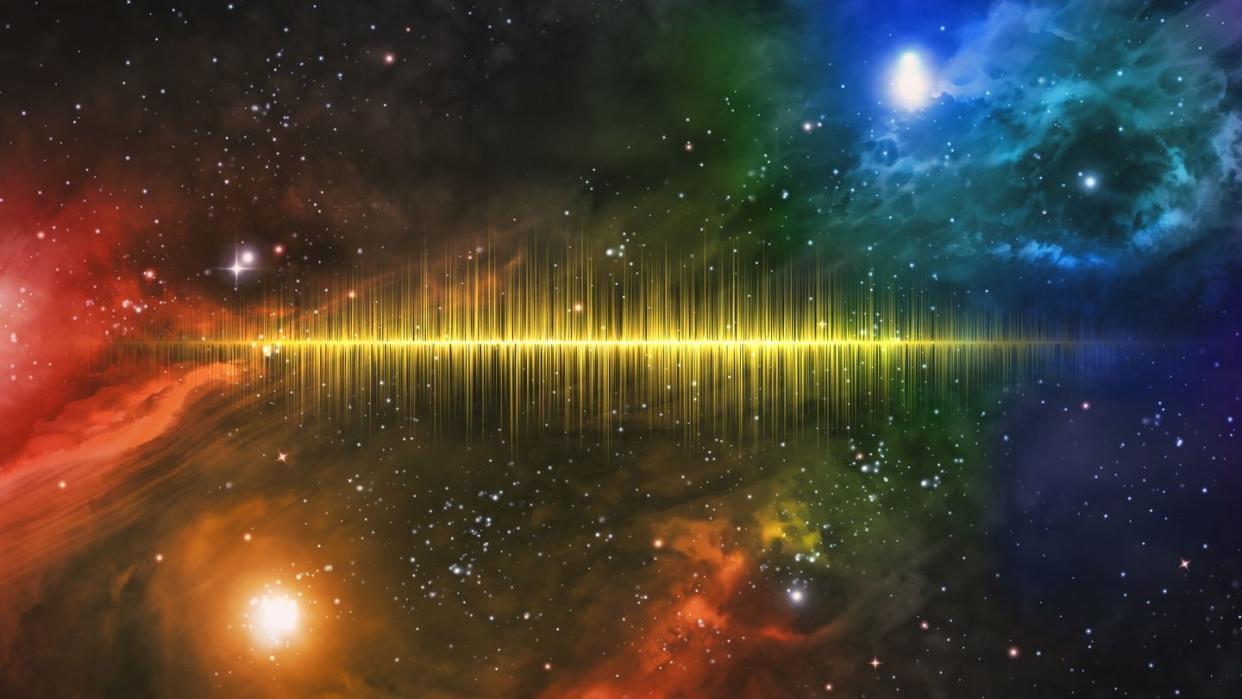Fast Radio Bursts Were Already Mind-Boggling. Now They're Even Faster.

"Hearst Magazines and Yahoo may earn commission or revenue on some items through these links."
Fast radio bursts (FRBs) are blasts of electromagnetic radiation in the form of radio waves usually emanating from galaxies beyond our own.
This cosmic phenomena is incredibly common, and FRBs have durations ranging from milliseconds to just a few seconds.
However, scientists from the University of Amsterdam detected a new type of FRB that are ultra fast—lasting less than 10 millionths of a second.
For something that scientists believe occurs thousands of times across Earth’s sky every day, fast radio bursts (FRBs) are still a mystery even some 16 years after their initial discovery. Case in point, scientists might’ve jumped the gun by labeling FRBs—which can last anywhere from thousandths of a second to a few seconds—as “fast.” A new study published last week in the journal Nature Astronomy detected a new kind of radio burst that can clock in at ten millionths of a second or less. That’s 0.00001 seconds, for those keeping count.
Known as ultra-fast radio bursts, these deep space emissions were first hypothesized in a 2021 study, but now scientists from the University of Amsterdam have detected the bursts by focusing on data gathered by the Green Bank Telescope in West Virginia. FRB 20121102A (all FRBs are similarly labeled as a jumble of numbers and letters) was first discovered in 2012, and this particular ultra-fast radio burst originates from a point some 3 billion light years away from us. It’s also the first known FRB to repeat (though a recent study in 2023 found 25 more repeating candidates).
“During our group meetings, we often talked about [ultra-fast radio bursts]” Mark Snelders, Ph.D. student at the University of Amsterdam, said in a press statement. “By coincidence, I found out that there was a public dataset that we could use for this.”
Getting the data was one thing, but finding these very small radio bursts within that data was something else entirely—after all, these radio bursts are far beyond “blink and you’ll miss it” territory. After acquiring some five hours of recorded data on FRB 20121102A, Snelders and his team took the first 30 minutes and split each second into 500,000 separate images. The scientists then used machine learning and software filters to isolate outliers in the data. In total they found 49 bursts, eight of which lasted only ten millionths of a second or less and could be categorized as ultra-fast radio bursts.
However, one major hurdle still exists for studying these cosmic blips — it’s extremely hard to chop data into such fine pieces. In fact, the authors admit that some data files simply weren’t “detailed enough to cut into half a million pieces per second.” But even with this dataset, it’s clear that FRBs are far more common that we realized.
“In detecting and characterizing these microsecond-duration bursts, we show that there exists a population of ultra-fast radio bursts that current wide-field FRB searches are missing due to insufficient time resolution,” the study reads. “These results indicate that FRBs occur more frequently and with greater diversity than initially thought.”
Scientists still aren’t certain what is producing these FRBs, ultra-fast or not. But they likely originate from extremely massive objects like white dwarfs, black holes, neutron stars, or highly magnetized neutron stars known as magnetars. And whether we know where they come from or not, we hope to eventually be able to make use of these bursts. Just last week, scientists using the Australian Square Kilometre Array Pathfinder (ASKAP) radio telescope and the Very Large Telescope (VLT) in Chile discovered FRB 20220610A, the oldest (and therefore furthest) FRB to date. Scientists hope to use the radio bursts like this one as a way to map the universe—or, at the very least, the space between the radio burst’s origin and our home galaxy.
In the coming years, new ground-based telescopes like the Extremely Large Telescope (ELT) will only enhance our capabilities of sniffing out these mysterious radio bursts that fill the night sky. And when that happens, who knows what we might find.
You Might Also Like

